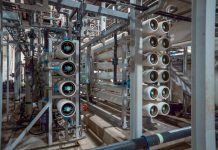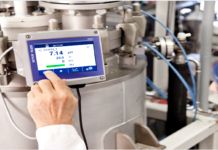The global chemical and fertilizer industry, essential to modern agriculture, is under growing scrutiny for its environmental impact.
It contributes 7% of global greenhouse gas emissions, with fertilizer manufacturing alone accounting for 2–3% due to the energy-intensive ammonia synthesis process.
The sector consumes ten percent of global industrial energy, primarily derived from fossil fuels, making it a critical target for climate action.
A Booming Market with Dual Challenges
The global fertilizer market is expected to reach $220.44 billion by 2025.
In India, the market is projected to grow from $41.2 billion to $70.2 billion by 2032, with a compound annual growth rate (CAGR) of 6.1%.
However, meeting this growing demand while reducing emissions poses a significant challenge.
Currently, India’s fertilizer production emits approximately 0.58 tons of CO₂ per tonne, contributing 25 million tonnes of CO₂ annually.
Embracing Solar Energy for Cleaner Production
To address these challenges, the industry is adopting innovative technologies aimed at lowering emissions.
One notable solution is the integration of solar energy into production facilities.
By installing solar panels, manufacturers reduce their reliance on fossil fuels and increase renewable energy usage, significantly cutting emissions.
Carbon Capture: Turning Waste into Opportunity
Carbon capture utilization (CCU) technologies offer another promising approach.
These systems capture CO₂ emissions from flue gases and repurpose them into valuable products.
For example, combining CO₂ with ammonia produces ammonium bicarbonate, a marketable fertilizer. Similarly, liquid CO₂ can be compressed for use in urea synthesis, improving efficiency and lowering the carbon footprint.
Additionally, advanced bioreactors now enable the conversion of captured CO₂ into ethanol, a sustainable alternative to fossil-based ethanol.
Green Hydrogen: A Game-Changer for Ammonia Production
Green hydrogen is emerging as a transformative solution for ammonia production. By replacing natural gas with green hydrogen – produced using renewable energy – the fertilizer industry can align with global decarbonization goals.
Advancing Biofuels and Circularity
The sector is also investing in biofuel technologies to promote sustainability. For instance, biodiesel production from methanol and liquid CO₂ reduces dependence on petroleum and encourages circularity.
India’s abundant renewable resources position it as a leader in this green transition.
Waste-to-energy models, bio-fertilizers, and renewable energy integration provide opportunities to significantly reduce the country’s carbon footprint.
Driving Innovation Through Policy and Technology
Innovations like electrochemical nitrogen fixation, enhanced nutrient management, and bio-based fertilizers are reshaping the industry.
Digital agriculture technologies are optimizing resource use, further enhancing sustainability.
Policy support will play a pivotal role in accelerating these changes. Carbon credits, tax incentives, and subsidies can drive innovation and adoption of sustainable practices.
Additionally, global collaborations with research institutes can advance technologies such as carbon capture and green hydrogen.
A Path to Sustainability and Market Leadership
As the fertilizer industry pivots toward sustainability, companies adopting these innovations stand to align with global climate goals while gaining a competitive edge in the eco-friendly market.
As reported by knnindia.co.in, the transition represents not only an environmental imperative but also a strategic opportunity to secure a more sustainable future.
































